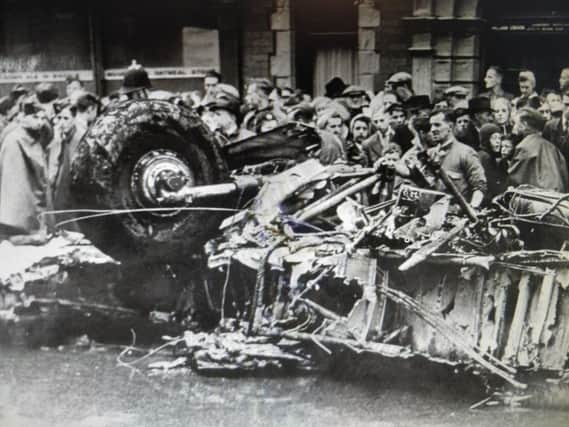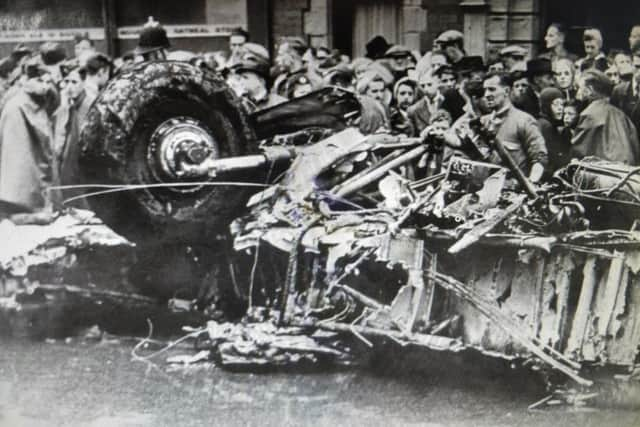The tragic past of Coral Island - built on the site of disaster that killed 18 people


Luckily, that isn't the case and, perhaps remarkably, the attraction re-opened as usual this morning after suffering minimal damage.
But the popular arcade stands on the site of another disaster dating back to the Second World War. Older Sandgrown'uns may well know the tale, though some of the younger generation may not.


Advertisement
Hide AdAdvertisement
Hide AdThe Central Station actually story began much earlier, in 1863, when it opened as Hounds Hill station - little more than a shack at the end of a single track line from Lytham.
By the turn of the century, hordes of holidaymakers and day trippers were flooding into Blackpool by rail and the town itself was expanding fast.
In 1903 a new direct line was opened from Kirkham to South Shore and Central and it is along this rail route that Yeadon Way now runs.
The land occupied by the Central Station tracks - where hundreds of coaches used to be shoe-horned into a parking space at night - was cleared to become known as the South Shore Central Corridor and has been converted into the biggest coach and car park in Europe.
Advertisement
Hide AdAdvertisement
Hide AdIn its heyday Central Station was a hive of activity, with arriving visitors wooed by touts encouraging them to find lodgings at various boardinghouses and hotels.
An army of youngsters with home-made wooden carts waited to transport luggage in return for a few pence while hundreds of departing holidaymakers scrambled for a seat on the train home.
The station was busy on Wednesday, August 27, 1941, when an horrific accident caused more civilian casualties than all the enemy raids on the Fylde coast during the war.
A Bolton Paul Defiant plane clipped the tail of a Blackburn Botha while both aircraft were flying over the town at just after 3pm.
Advertisement
Hide AdAdvertisement
Hide AdBoth plunged to the ground, with the Botha crashing through the glass roof of Central Station - where Coral Island now stands - while the Defiant destroyed a home on nearby Reads Avenue.
The crash saw shrapnel and metal fragments rain down on the streets. Eighteen people were killed and a further 35 injured during the tragedy.
Local aviation historian Russell Brown said: "The disaster was due to a tragic, unfortunate and unforeseen series of circumstances.
"At that time, Blackpool wasn't just a resort, it was the biggest ground training station for the RAF in the whole world.
Advertisement
Hide AdAdvertisement
Hide Ad"We also had the army here training at what [was] Pontins as well as thousands of evacuees.
"Add to that the number of tourists and holidaymakers in town and the streets were very busy."
All the crew members of both aircraft lost their lives in the crash.
The majority of the Botha crashed through the roof of Central Station causing part of the roof to collapse and sparking a fierce fire inside the building.
Advertisement
Hide AdAdvertisement
Hide AdSurvivor Percy Featherstone from Barnsley said: "It exploded about four yards behind me and my mother, just where we had walked from.
"The heat was intense and the pain terrible. We were soaked in aviation fuel."
The Defiant came down on 97 Reads Avenue, a home which was never rebuilt. Owners Mr and Mrs Lionel Franceys were inside at the time, but miraculously escaped unharmed.
The Central Station shut its doors in November 1964. The end of the lights that year was also the end of the line.
Advertisement
Hide AdAdvertisement
Hide AdMany people in the town could not believe the decision to shut down a terminus more than a century old which had brought in millions of trippers and deposited them at the heart of holiday town Blackpool.
Old railwaymen used to say the takings from the toilets at Central paid the rates bill, but Blackpool council didn't shed too many tears when they signed a deal with British Rail which gave them Central and a vast swathe of land reaching south and leading out through South Shore and Marton, for what was recognised as a bargain price of £950,000.
